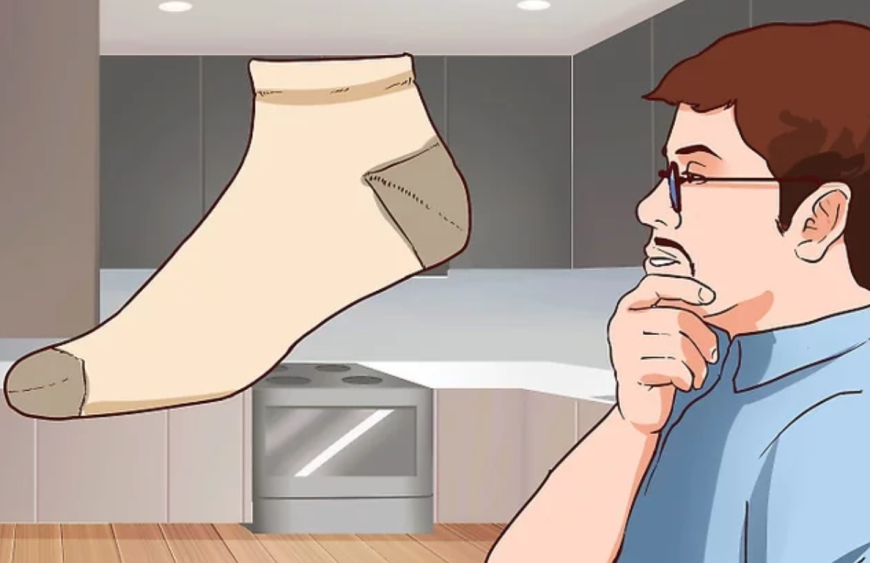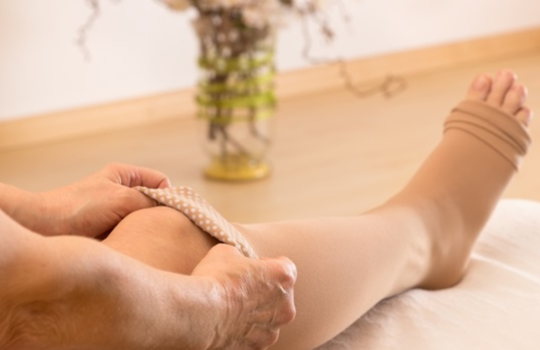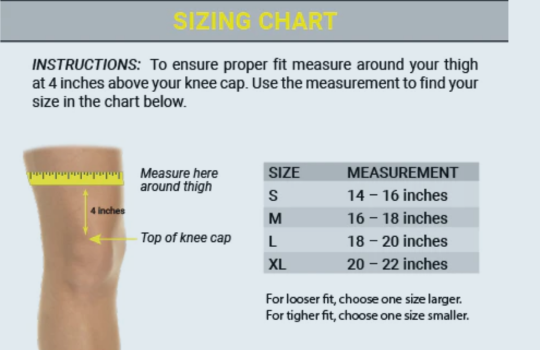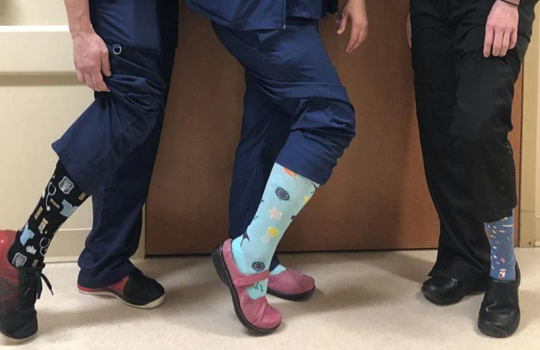Table of Contents
Introduction
Compression socks are elastic socks designed to improve blood circulation, decrease edema and guard against varicose veins in legs. A compression sock may be prescribed by doctors when someone suffers from persistent venous conditions like deep vein thrombosis, leg ulcers or lymphedema alternatively, they should also be worn by athletes, travelers, expectant mothers and others who spend extended amounts of time standing or sitting, including athletes, travelers, expectant mothers and others who spend significant amounts of time standing or sitting. In this article we will know about how to put on compression socks
However, donning compression socks may prove challenging if you need more mobility or strength in your hands or arms. Because compression socks are designed to fit tightly around legs, they may be hard to pull on or off easily and quickly however there are a few tricks that may make process simpler and more comfortable.
Are you interested in learning about diabetic compression socks? Explore our comprehensive guide on diabetic compression socks at Medical Athletic to discover how they can benefit you.
Steps to follow how to put on compression socks correctly
Choose the right size and type of compression socks.
Compression socks come in different sizes, lengths, and pressure levels. For an appropriate fit and prescription tailored to your condition, you should seek guidance from your medical practitioner or a medical equipment supplier. In terms of comfort, compression socks should offer a snug fit without causing pain while also encompassing regions of concern on your legs. For instance, if ankle swelling is an issue, knee high compression socks that extend just below the knee are recommended. In case of thigh based varicose veins, opting for thigh high compression socks that extend to the groin area is advised.
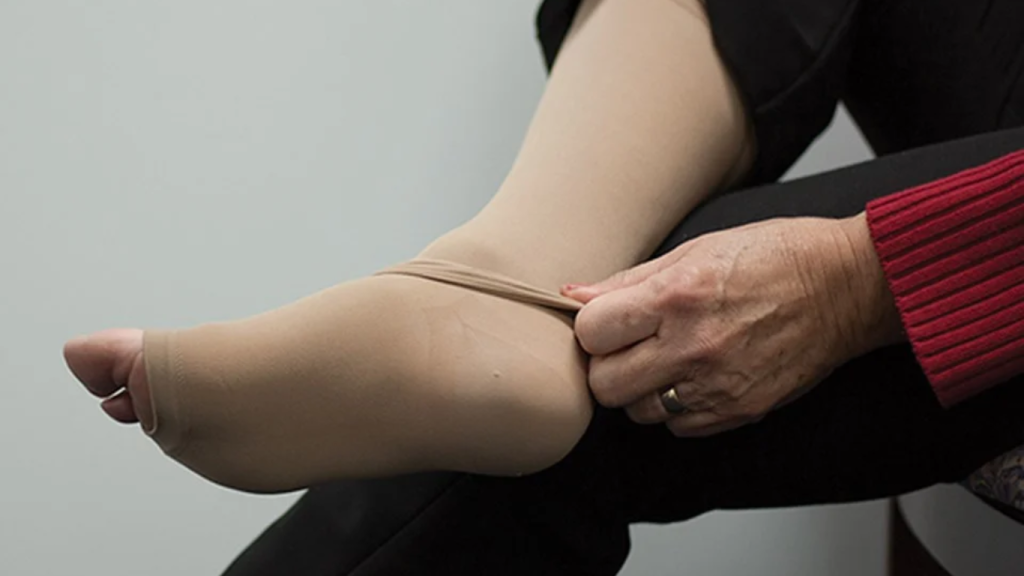
Wear compression socks first thing in the morning.
The ideal timing for donning compression socks is upon awakening, before leg swelling or fatigue from extended standing or sitting. A shower is advised before donning compression socks; otherwise a plastic bag can act as a shield. Having both dry and clean legs before donning compression socks is critical.
Turn top part of the sock inside out.
A convenient technique for donning compression socks involves gently flipping them inside out, starting from top and proceeding to heel. This action forms a pocket, simplifying process of sliding your foot into the sock. You can employ your fingers or a rubber glove to grasp the sock and perform an inside out maneuver.
Put your foot into sock and pull it over your heel.
Sit on a chair or edge of your bed, then elevate your leg slightly. Gradually introduce your toes into a sock and make necessary adjustments until it sits comfortably over your foot. Subsequently, gently draw the sock over your heel and up your ankle. Ensure that heel portion of the sock aligns seamlessly with your foot’s heel.
Gradually pull sock up your leg.
Using both hands, gently stretch sock and pull it up your leg in small increments. Smooth out any wrinkles or folds as you go. Avoid rolling or bunching up stockings, which can create pressure points or reduce blood flow. The top of the hose should reach the prescribed length, such as below your knee or thigh.
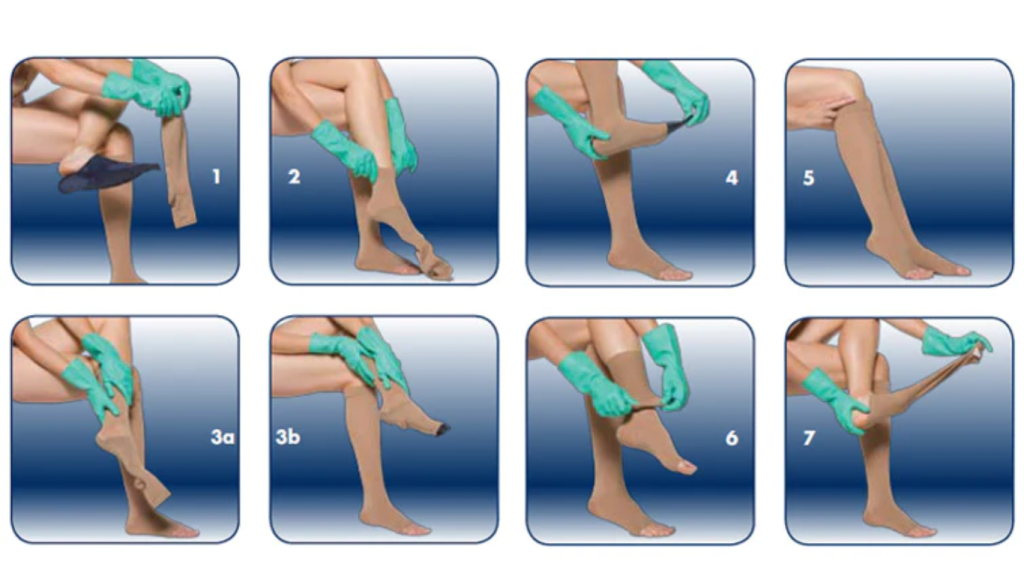
Repeat with other leg.
If you need to wear compression socks on both legs, repeat same steps with other pantyhose and legs. Make sure both socks are evenly positioned and comfortable.
Check for signs of discomfort or poor fit.
After successfully donning both socks, you should experience a sensation of mild pressure on your legs without encountering any pain or numbness. Your toes should retain their capacity to move unobstructed, maintaining sufficient blood circulation. Suppose you detect any discomfort, itching, tingling, or alterations in the condition of your skin. In that case, remove your compression socks and promptly contact your healthcare provider or supplier. An adjustment in size or pressure level of compression socks may be necessary.
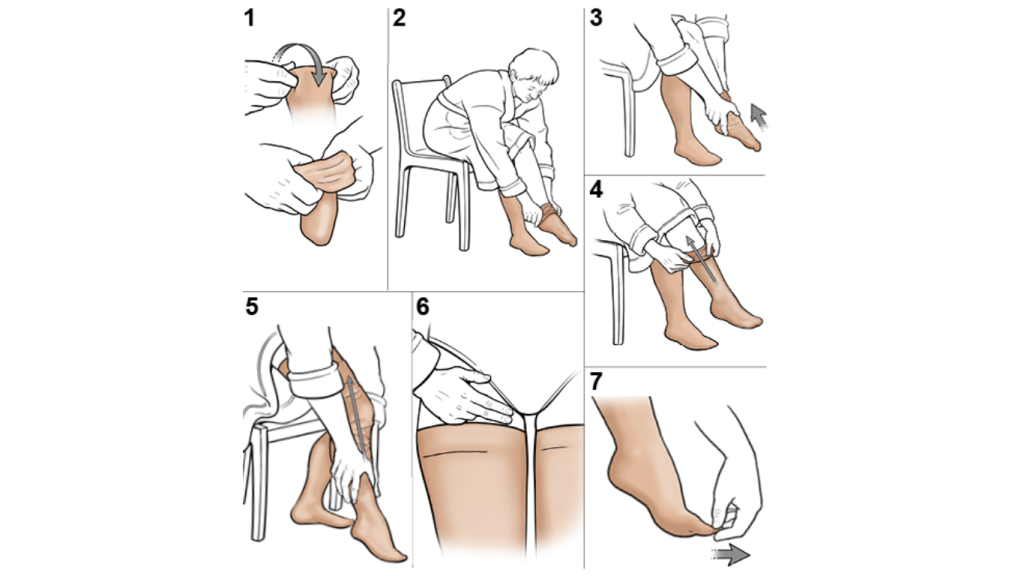
How to take off your compression socks
How to take off your compression socks
To remove your compression socks, you can use the same method in reverse: pull down the sock from the top until it reaches your ankle then slide it off your foot. You can also use a medical dressing stick or a sock aid device to help you remove your compression socks.
Compression socks can benefit your leg health, but only if you wear them correctly and regularly. Following these steps, you can put on compression socks quickly and enjoy their positive effects.

